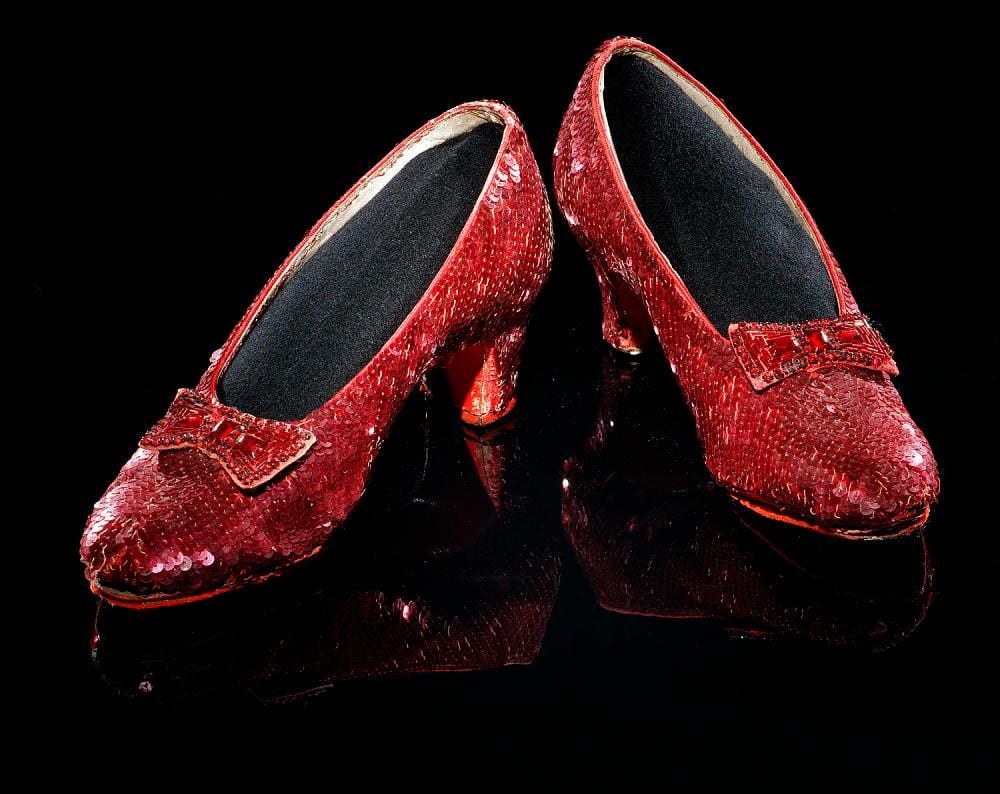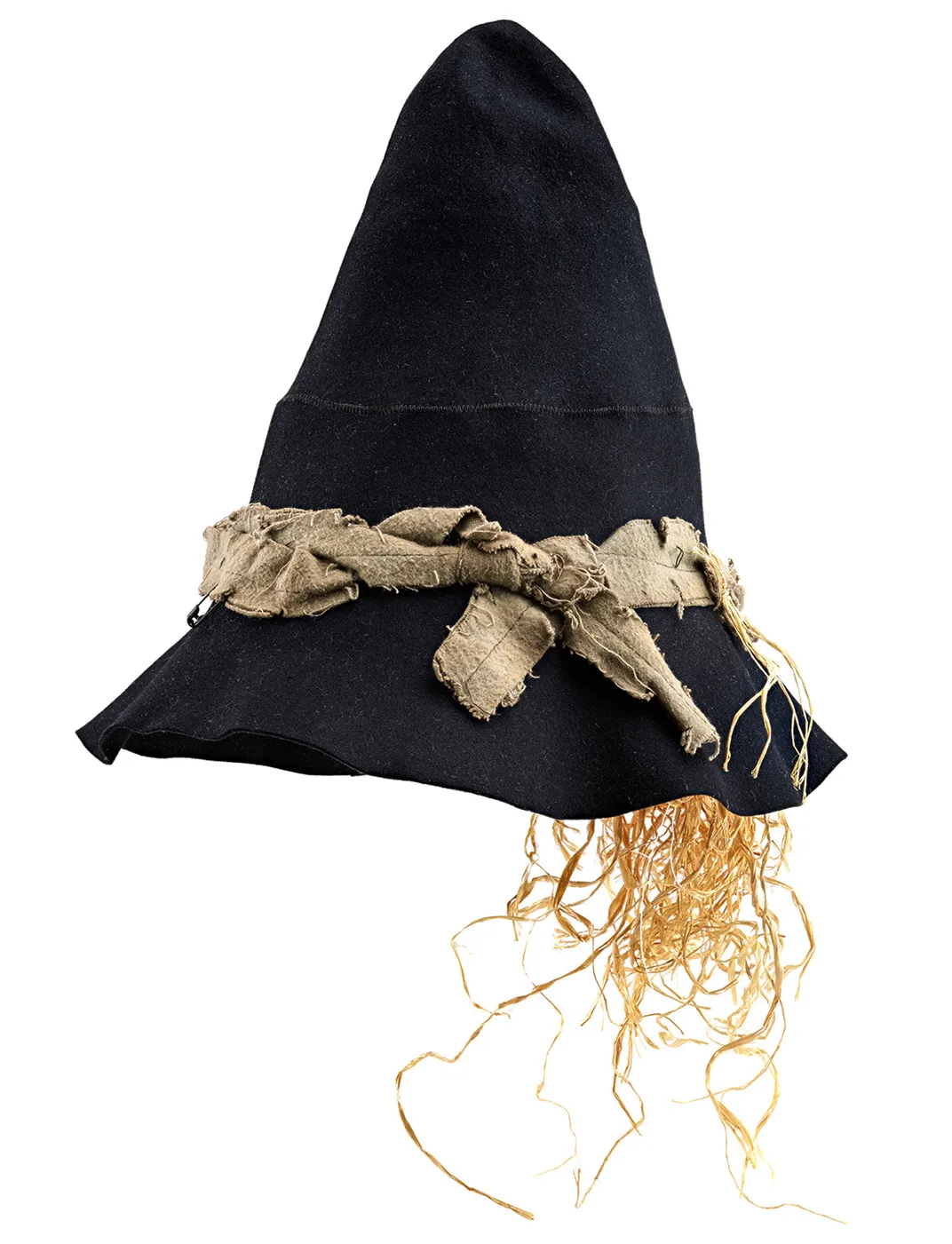Smithsonian Will Stretch to Save Scarecrow’s Costume, Too
Turns out the Ruby Slippers were just the beginning of an epic journey of cultural preservation
Over 5,000 backers and $300,000 later, a groundbreaking Kickstarter campaign to preserve the Ruby Slippers from The Wizard of Oz has brought an overwhelming cash infusion to the Smithsonian Institution’s conservation efforts. Now, with 23 days remaining on the Kickstarter campaign, the museum will take another trip down the yellow brick road in an attempt to save the outfit of Dorothy’s beloved Scarecrow, too.
Curators from the National Museum of American History announced today that with the remaining days left in the campaign, they hope to leverage ongoing interest in preserving the costume to help protect the Scarecrow’s costume. They’re asking the public for an additional stretch goal of $85,000 for the care and display of the Scarecrow’s costume from the 1939 film.
It’s the outfit comedian Ray Bolger wore as he clumsily walked his way into America's heart. As Dorothy’s first companion on the Yellow Brick Road, the straw-stuffed Scarecrow holds a central place in the film—and in the career of Bolger. The comic actor loved his role in The Wizard of Oz so much that he saved his costume. When he died in 1987, it was donated to the Smithsonian by his widow, Gwendolyn Bolger.
The unique physical style that made Bolger such a hilariously memorable dancer is evident in his costume, which evokes Bolger’s bendy body for Ryan Lintelman, curator of the National Museum of American History’s entertainment collection, even today. Consisting of a hat, trousers, jacket, collar, gloves, cuffs, belt and shoes, it was donated complete with a bag of raffia that Bolger used to create that stuffed scarecrow look. “It really accentuates the crazy moves that he made when he was dancing,” Lintelman tells Smithsonian.com.
Eccentric, comical dancing was already one of Bolger’s signatures when he was hired on as part of The Wizard of Oz’s cast. Bolger got his start on the vaudeville circuit where he learned that dancing was a great way to capture audiences’ attention, even though he considered himself a comedian first. But Bolger almost never got the chance to bring his iconic moves to somewhere over the rainbow. Initially, he was hired to play the Tin Woodman in the film, instead. Buddy Ebsen had already been pulled to play the Scarecrow, but Bolger lobbied to swap roles with him. He got his way—and turned his performance into a career-defining moment.
Ebsen, on the other hand, was not as lucky. He finally agreed to play the Tin Man, but was eventually forced to give up the role after the aluminum dust in his makeup caused a severe allergic reaction. He was replaced by Jack Haley. The Scarecrow costume may not have had aluminum and metal to tussle with, but it was still exhausting to wear. Not only did its collar need to be melded onto the face to create a realistic burlap look—a process that reportedly gave Bolger permanent facial lines—but it was almost unbearably hot beneath the lights that gave the Technicolor film its glow and Bolger had to take frequent breaks, sometimes nearly fainting from exertion.
The story of his costume’s importance in Hollywood history “is less about Hollywood glamour, and more about the character development in The Wizard of Oz,” says Lintelman. Like Dorothy, he says, the Scarecrow joins a team of misfits on a journey he never intended to take. “They all realize that the thing they’re searching for is what they had all along,” he says. “That is something that, psychologically, really resonated with Americans at the time. We’ve always been very individualistic, rugged people who think we can confront any challenge, but the Great Depression was such a blow. People saw the movie and realized they had the power to confront the challenges within themselves the whole time.”
For Lintelman, Bolger’s role as the Scarecrow draws not just on the Great Depression desire to escape reality with mass amusements, but on the broad comedy of vaudeville, which grew out of America’s increasingly diverse immigrant culture. “His style of acting really grew out of the urban experience,” he notes. “Very broad comedy, a very physical style of acting and dancing—this was something that appealed to a broad number of people.”
Though The Wizard of Oz’s box office numbers paled in comparison with that year’s smash hit, Gone With the Wind, it managed to grow larger in the popular consciousness over time thanks to annual TV broadcasts beginning in 1956. That shared cultural experience, says Lintelman, is what makes preserving treasures from The Wizard of Oz so challenging. “The things that need the most preservation are the things that need the most love.”
Though the Scarecrow’s costume has less wear and tear than the Ruby Slippers, it needs special attention, too—it has faded over the decades, and conservationists hope to use the funds they raise to assess its ongoing needs, protect its color and fabric, and prepare it for display and the years to come.
At the end of The Wizard of Oz, Dorothy bids the Scarecrow goodbye, whispering that she’ll miss him most of all. But with the help of the American people—and the people from more than 40 countries who have already given money to preserve the Ruby Slippers—nobody will have to say goodbye to the Scarecrow’s costume or other iconic memorabilia from the film any time soon. “These things represent our cultural heritage,” says Lintelman. “They are owned by the nation. They’re not just for nostalgia—they matter to our cultural identity.”

/https://tf-cmsv2-smithsonianmag-media.s3.amazonaws.com/accounts/headshot/erin.png)
/https://tf-cmsv2-smithsonianmag-media.s3.amazonaws.com/filer/00/90/009061ad-7d04-4578-92f0-4bb9ce7d273c/nmah20013455web.jpg)

/https://tf-cmsv2-smithsonianmag-media.s3.amazonaws.com/accounts/headshot/erin.png)